How to Choose a Fitness Band
Sometimes the wish to have fitness training sessions at home is not enough, because this requires extra sports equipment. For example, with the help of a fitness band, you can work out various groups of muscles. The main thing to remember is which band to opt for.
5-Minute Crafts is going to tell you about the specifics of fitness bands, which are one of the most popular accessories for working out.
What types of fitness bands are there
- Therapy resistance band expander
This type of fitness band looks like a long, thin elastic band with a width of about 4-8 inches. You can work out almost any muscle group with its help. Thanks to its flexibility, the band can be tied into a ring and used as a band loop.
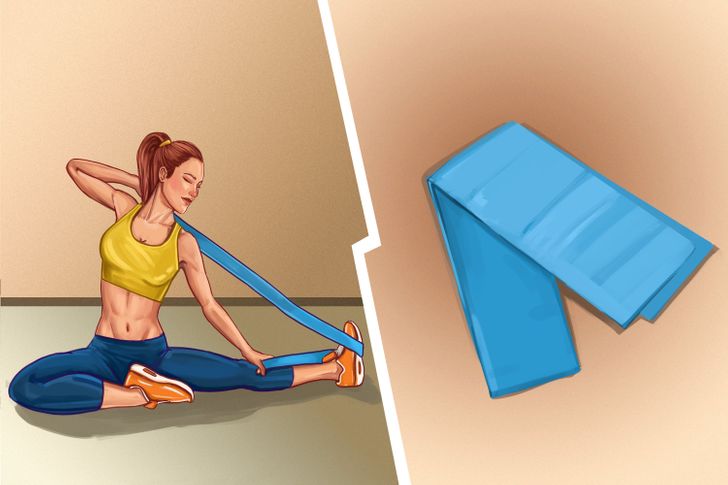
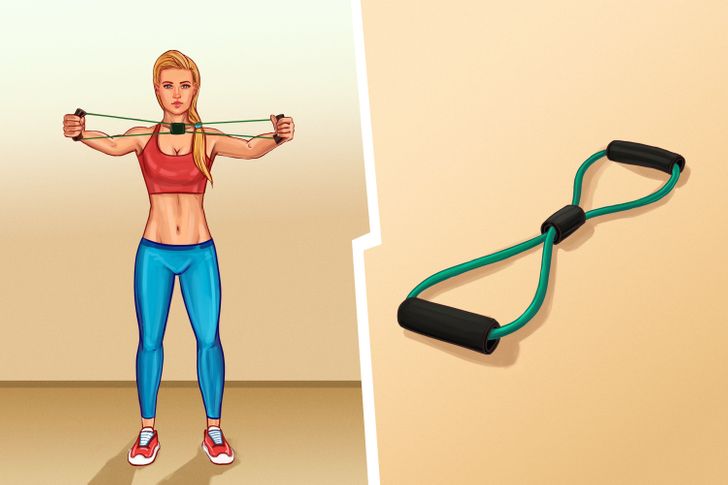
-
Resistance band with handles
This band looks like a thin harness with 2 handles on its ends. It has a medium degree of resistance and lets its user perform exercises with a big amplitude. It helps train almost any group of muscles, but especially the muscles of the arms, back, thighs, and buttocks.
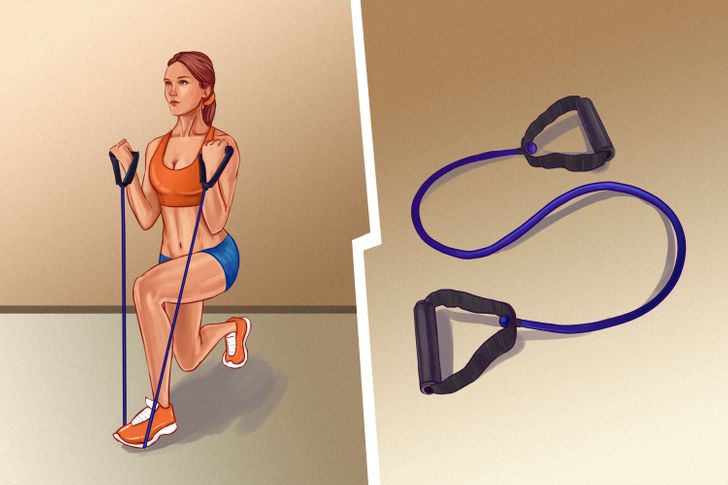
- Long resistance band loops
They look like ordinary elastic, medium-width bands closed in a loop. Usually, they are narrow and are high resistance and long enough to perform exercises with a big amplitude. They can help you train the muscles of the arms, back, core, and abs.
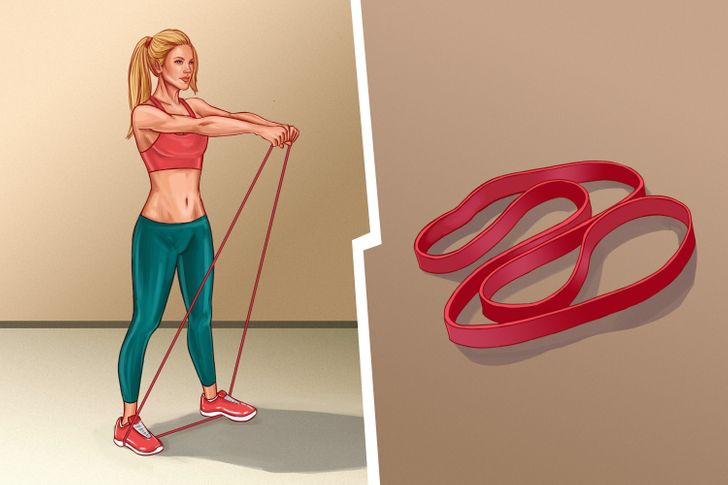
- Mini resistance band loops
This is one of the most popular and convenient types of fitness bands. Oftentimes a person looking for an elastic band is looking for the mini resistance band loop. These bands are great for beginners, they help to work out the muscles of the abs, hips, and buttocks, and are also the least traumatic. It looks like a wide elastic band closed in a ring. They are made from different materials like latex, rubber, rubberized fabric, and polyurethane. They are oftentimes sold in sets of several bands.
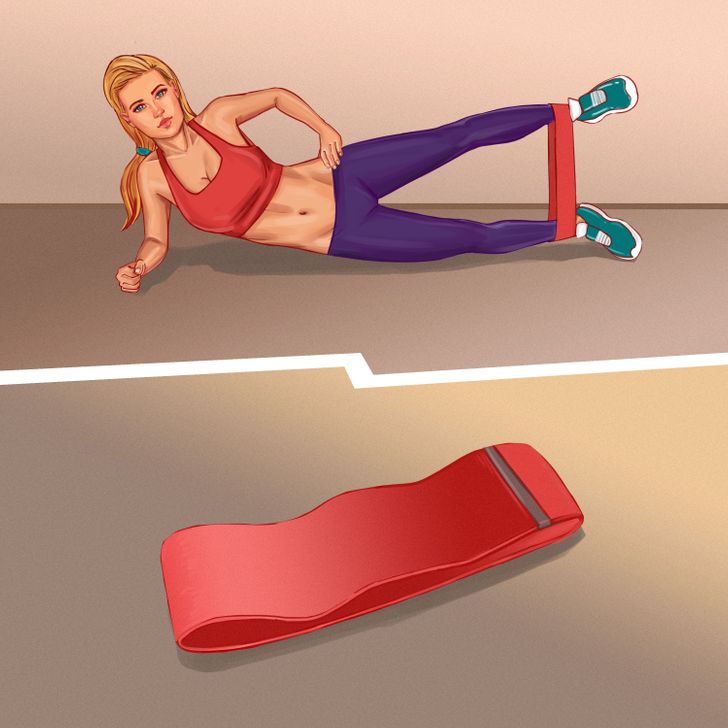
Which material to choose
Several types of materials are used for producing fitness resistance bands, each has its own advantages and disadvantages.
- Latex
Bands made from this material are quite thin and are very elastic, they stretch well and are usually cheaper than their analogs made of different materials. However, long resistance band loops and mini resistance band loops made from this material can twist and slide along the body while performing exercises, which can cause irritation in people with sensitive skin. - Rubber
This is a more resistant and less durable material. It wears out pretty fast and loses its resistance over time. Usually, it’s used for producing loops, expanders, and Figure 8 bands. - Fabric (cotton / polyester / nylon + latex threads)
Normally, these bands consist of a fabric base and numerous latex threads braided into it. It lets the bands be more durable and elastic than latex ones. They don’t slip off the body, don’t rub the body hard, and preserve their original look for a long time.
How color and marking affect the resistance degree of a band
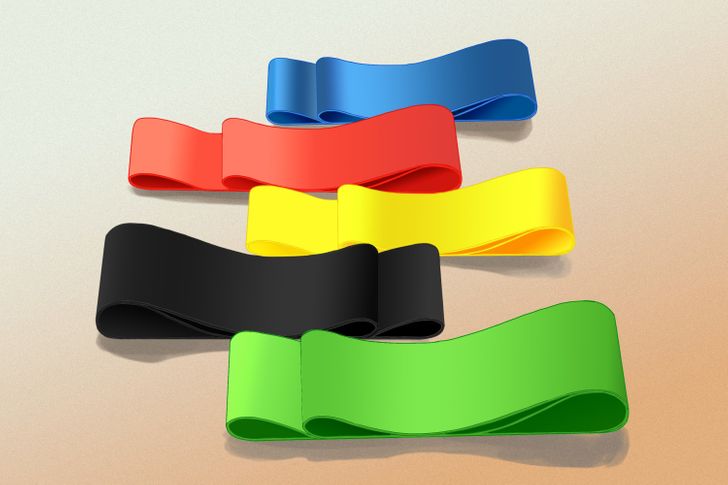
Many manufacturers use different colors of elastic bands to indicate the degree of its resistance and the level of pressure it will put on the muscles. Some manufacturers also put special markings on the rubber bands to help buyers choose the right one. As a rule, colors and markings mean the following:
- Color: green
Marking: extra light, S, X-Light
They provide a light load and suit both beginners and those who’ve had a long break in fitness training. - Color: blue
Marking: light, М, Light
These are good for warming up before the main workout. Also good for those who are just starting to work with elastic bands. - Color: yellow
Marking: semi-light, L, Medium
These are suitable for people with a medium level of preparation. It might be hard to work out the chest and arms with these bands. They are best suited for working out the legs and butt muscles. - Color: red
Marking: XL, Heavy
These are good for athletes and those who have been working with heavy loads for a long time. - Color: black
Marking: extra-heavy, XXL, X-Heavy
These are for professionals and those who find it easy to work out with heavy resistance bands.
How to choose the right one for yourself
1. Decide what you need a resistance band for.
If you would like to work out the whole body, pay attention to therapy bands — they will provide you with a moderate load and help diversify the exercises you do. If you want to pay more attention to a certain zone, opt for the band that will give you a serious and more focused load on the muscles.
2. Take into account your physical condition.
Choose an elastic band that suits your fitness level. If you are just starting out — choose less elastic options, if you already have experience in training — take a look at elastic bands with a high level of elasticity.
Purchasing a set of elastic bands can become a profitable investment — they will help you gradually increase your load with different bands aiming at different muscle groups.
3. Explore the ratio between the price and the quality.
Basically, more durable bands made of fabric and polyurethane cost more than their latex or rubber analogs. Decide how often you are ready to change this equipment — whether it’s more profitable to buy a cheaper band and replace it with a new one after some time or whether it’s better to go for a more expensive type of band at the beginning.